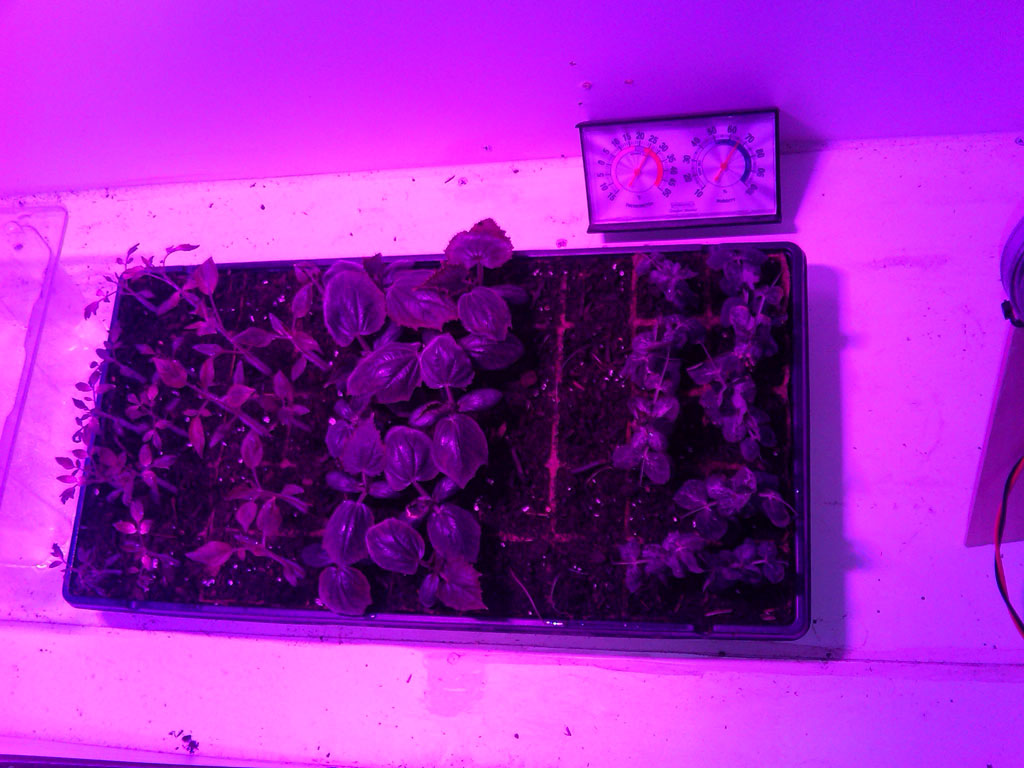TheDude's grow chamber w/video pt1
Love and light! Literally what makes your garden grow!
LED Gardening by TheDude - pt1 video

Hi guys. I've been wanting to post in here for some time now. I need to completely read this thread but wanted to forward this video to others so i figured i needed post it here at the same time. I promise to read up to snuff later and be applicable.
Hopefully i'm not reiterating too much or contradicting anyone.
This is my first video documenting a full grow cycle for 4 tomato plants in a grow chamber light strictly through the use of high powered LED lights.
My primary lamp is a Procyon 100 (400watt equivalent) which includes red~635nm peak and blue~450nm peak wavelength LEDs. It consumes aprox 100 watts and generates far less heat than conventional high pressure sodium or metal halide lamps. In the future i plan to use water cooling on its heat sink and embed the tubing beneth my seedling soil bed to help induce root growth and keep the chamber cooler. For flowering I am using a custom built high flux red 640nm LED lamp that i am going to be pulsing at 292 hz (Nogier Frequency - read here Chee Energy - About Us and here http://www.esmhome.org/library/led.html). In my chamber I hope to provide some proof to illustrate how a plant's phytochrome Pr and Pfr levels can be controlled to produce fruits and vegetables through the management of the red and infrared spectrum.
In short order i intend to install an aeroponic feeding system whereby the roots hang inside buckets and are continuously washed in nutrient from a tank of organic tea. I hope to keep 4 tomato plants inside for an entire grow cycle and then weigh the total production against 4 tomato plants that have been grown in my outdoor garden.
I will be setting up and hosting a live feed as well as time lapse capturing of the growth in this chamber. Will update with links here in the near future.
Wish me luck.
Love and Light
TheDude
Love and light! Literally what makes your garden grow!
LED Gardening by TheDude - pt1 video

Hi guys. I've been wanting to post in here for some time now. I need to completely read this thread but wanted to forward this video to others so i figured i needed post it here at the same time. I promise to read up to snuff later and be applicable.
Hopefully i'm not reiterating too much or contradicting anyone.
This is my first video documenting a full grow cycle for 4 tomato plants in a grow chamber light strictly through the use of high powered LED lights.
My primary lamp is a Procyon 100 (400watt equivalent) which includes red~635nm peak and blue~450nm peak wavelength LEDs. It consumes aprox 100 watts and generates far less heat than conventional high pressure sodium or metal halide lamps. In the future i plan to use water cooling on its heat sink and embed the tubing beneth my seedling soil bed to help induce root growth and keep the chamber cooler. For flowering I am using a custom built high flux red 640nm LED lamp that i am going to be pulsing at 292 hz (Nogier Frequency - read here Chee Energy - About Us and here http://www.esmhome.org/library/led.html). In my chamber I hope to provide some proof to illustrate how a plant's phytochrome Pr and Pfr levels can be controlled to produce fruits and vegetables through the management of the red and infrared spectrum.
In short order i intend to install an aeroponic feeding system whereby the roots hang inside buckets and are continuously washed in nutrient from a tank of organic tea. I hope to keep 4 tomato plants inside for an entire grow cycle and then weigh the total production against 4 tomato plants that have been grown in my outdoor garden.
I will be setting up and hosting a live feed as well as time lapse capturing of the growth in this chamber. Will update with links here in the near future.
Wish me luck.
Love and Light
TheDude







Comment